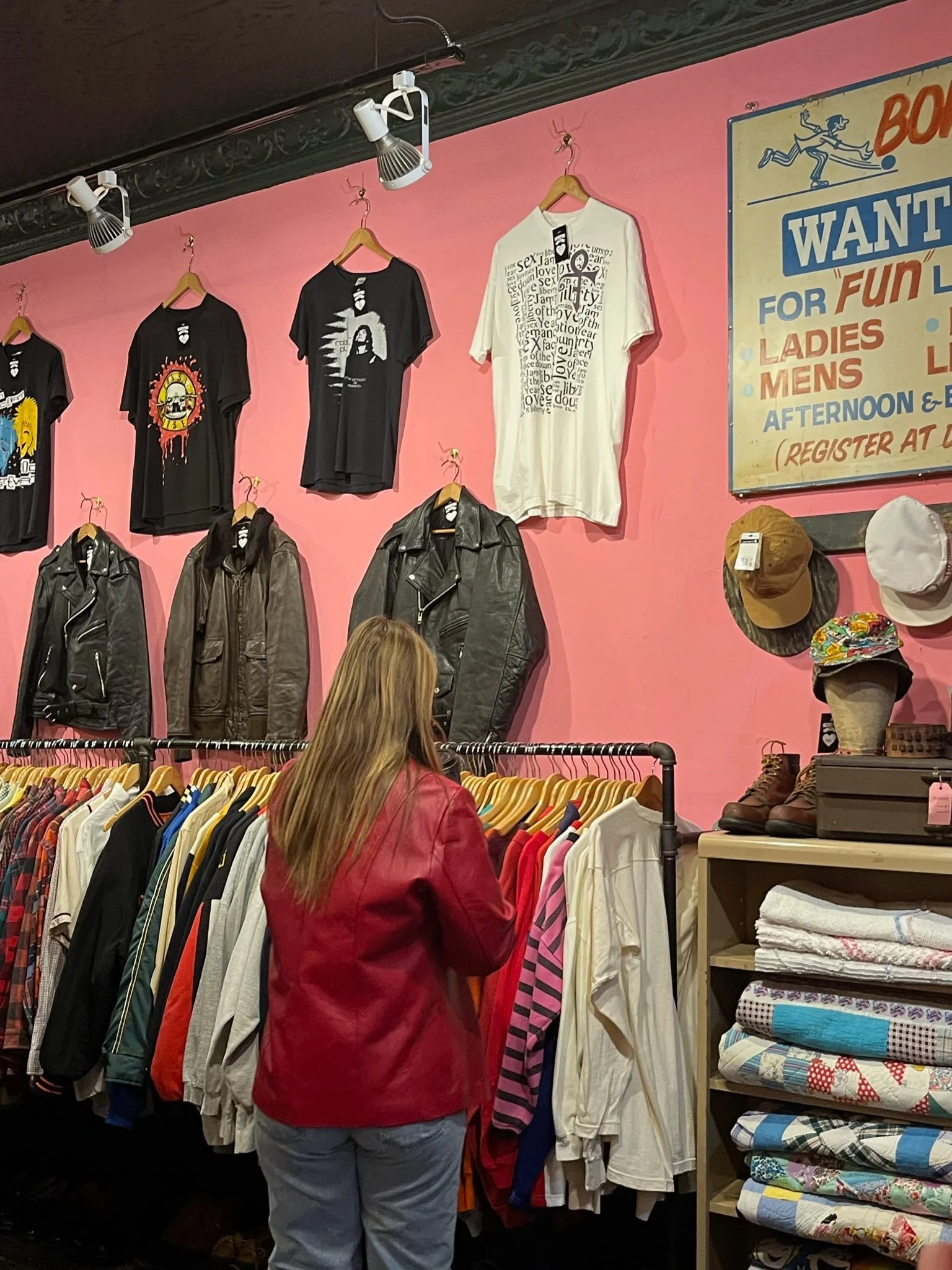Green Jacket
November 12th, 2025
Photo: Chloe Sinel
Writer: Georgia Silverton
Editor: Hannah Ober
It was the flash of green that first caught my eye. A rich emerald colour, a kind of jaunty, carefree hue. Not quite a Granny Smith, but not a gemstone either. The green was dark and seductive, yet with an unexpected energy. Never call me garish, it seemed to say, but look at me. I’m here, in front of its unexpected glimpse that came from the shadowy recesses of my closet on a day towards the end of July.
On the floor sat neatly lined up cardboard boxes, waiting to be filled, one labelled ‘throw out’. I was ruthless in my throwing out: ragged t-shirts, ripped shorts. Throw out. The words were forceful. Unequivocal. I was to arrive at my college bedroom in America with only a small, but carefully curated selection of clothes, modelled around my emergence as a new person, attending lectures, ticking off a ‘to-do’ list.
But I stopped. The green jacket unsettled my plans. Why? Something was confronting, nestled within the folds of the emerald fabric. Was it trying to tell me something? It was a small atom of meaning, a part of me, perhaps. Another me, I pondered. A ‘me’ that I didn’t know at all. A burst of anger travelled throughout my body. I threw the jacket into the box marked ‘charity’ and returned to the task at hand. Better not to know, I thought.
How could an old jacket from the back of my closet be quite so unsettling? “Clothes maketh the man,” says Shakespeare, or sulky teenage girls, for that matter. Who can forget the scene towards the end of ‘The Devil Wears Prada’? It is only when Andy changes out of her fabulous designer gear and reverts to her daggy glasses that she demonstrates individuality. We all got the message. She was real; she knew who she was. But who am I? What knowledge can the jacket reveal? Feminist theorist Judith Butler tells us that gender is not innate; it is performed. And clothing is one of the best ways of performing. By dressing carefully, we take on the lead role in the dramatic life of our best self. But what if we refuse to meet this version of ourselves?
I closed my eyes and thought back to when I first saw the jacket. I was flicking through my mum’s magazine that was left on the kitchen bench when I came across an image. A young woman stood in the dark forest-toned jacket in the middle of a yard of lovegrass. But it wasn't just the jacket that I desired; it was also the giraffe in the background, grazing on the African savannah. I wanted to be there - to be as bold as that woman was in the picture. I thought that maybe if I had the jacket, I might also be daring.
Strange, I know. Yet, clothing promises an illusion, offering access to a fictional version of yourself, convincing you that it will transform you into who you want to be. English art critic John Berger describes how advertisements plant subconscious thoughts into your mind, harnessing a potential buyer’s ambition or self-disatisfaction to compel them to buy a product. The buyer imagines themselves transformed by the product. The advertised image steals its audience’s self-love and offers it back to them for the price of the product.
I looked into the box to see the jacket in its true form: an empty piece of fabric, a well-manufactured length of material that had lured me into buying it, crumpled and disembodied. Well, now I saw through the tricks of the advertisement. But I stopped. The jacket was part of me. I couldn’t deny it. I needed to resuscitate this part of myself, sending it a jolt of energy to shock it from its dormancy. Walking over to the carton, I reached inside and picked up the jacket. I sensed hostility and betrayal; I expected resistance. But I was wrong. The bright, gauzy cotton submitted to my hold, bringing warmth to my body. I reached into the arm holes, pulling the jacket over my shoulders, and allowed it to fall around my body.
As I stood in front of my mirror, I felt bold. Whole. My academic self smiled back at me, but with a wicked gleam that spoke of untold adventures. The jacket was mere clothing, a well-marketed fashion item. But it was also something more. It was a part of my identity, a dimension of me. It was far from lifeless; it had a voice that spoke. I packed the green jacket into my suitcase. Yes, I was preparing myself for the rigours of University. Yet I was also adventuring into my future, and I preferred to know that this version of myself was coming along for the ride.

